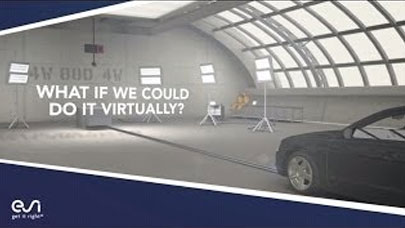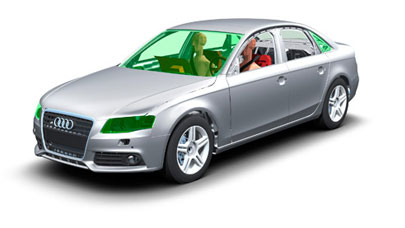In common with the entire automotive industry, designers of commercial vehicles are under ever-increasing pressure to cut program development times and costs, while at the same time meeting increasingly rigorous demands of reduced emission and fuel consumption regulations. For the Off-Highway sector, those challenges are further compounded by the need to develop platforms that are versatile and robust enough to perform well across the many variants that will be spawned from a single base vehicle, some of which will inevitably be required to operate in challenging environments, with regard to temperature extremes, terrain and dirt management. Finally, but most importantly of all, vehicle designers must provide a safe, quiet and comfortable working environment for vehicle operators. Increasingly, Off-Highway OEMs are meeting these demands with the help of extensive engineering simulation, which assists them to predict the performance of their vehicles from early in the design process, by constructing detailed virtual prototypes of the entire vehicle.
CNH Industrial is a global leader in the capital goods sector that, through its various businesses, designs, produces and sells a wide variety of vehicles, ranging from agricultural and construction equipment to commercial vehicles. The company also supports a broad portfolio of powertrain applications. From tractors and combines, excavators, wheel loaders, trucks, buses, firefighting and civil protection vehicles to powertrain solutions for on and off road and marine, the group sells ‘machines for work’. Across its 12 brands, 62 manufacturing plants, 48 research and development centers and a workforce of more than 71,000 people, CNH Industrial is present in 190 countries worldwide, which gives it a unique competitive position.
In order to understand how CFD has affected vehicle development in the Off-Highway sector, we spoke to Luc Dupon and Pieterjan Platteeuw, who are responsible for design analysis and simulation at CNH Industrial in the Zedelgem Engineering team.
Having worked for the company for over 30 years, Dupon has witnessed the growth of CFD in the commercial vehicle industry first hand, starting off ten years ago as a mere curiosity, to today where it plays a central role in vehicle development programs.
“In the past few years, CFD has become very important to us, especially in helping us to design products that meet and exceed the requirements on new emissions regulations.” says Dupon. “Before the arrival of CFD, we had no choice but to rely on experimental testing, and a process of trial and error. Our success in those days relied heavily on the experience of our engineering team, with product development driven as much by engineering intuition as hard data.” Dupon remembers. “Although this process delivered some excellent products, the cost of making a wrong design decision that would only be exposed by testing late in the cycle was very high. CFD allows us to mediate that risk through building virtual prototypes early in the design process.”
More around this topic...
In the same section
© HPC Today 2024 - All rights reserved.
Thank you for reading HPC Today.































